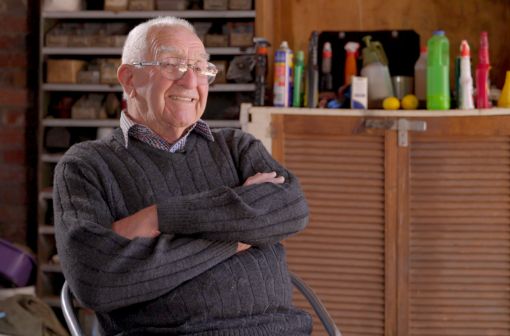“If you’ve planned ahead and researched different providers and made your choice, the transition will be a lot smoother and you and your family will feel more in control.” – Beverly Smith.
If you require some extra support with your day-to-day living arrangements, then you may be thinking of a move into aged care. If so, it’s important to consider all your options. Many homes not only provide high-quality accommodation and services, but also genuine care and respect for their customers. The question is: how can you be sure the home will have the right ‘feel’ for you?
It is possible to get beneath the surface, however, if you know what to look for and the questions to ask. This guide will help to give you the peace of mind of knowing you’ve made the right choice.

Give yourself enough time
Ideally, you should allow three to six months to find your ideal aged care home. It takes time to do your research and there might be a waiting list for your preferred location.
“We find that, in general, people like to stay within about 15 kilometres of their family home, or close to their oldest daughter,” says Beverly Smith, Executive General Manager of Australian Unity’s Residential Communities. “In an emergency your options could be very limited.”
Do your research
When you begin your research, the first thing to check is whether the home meets Australian regulations and standards.
“This service compliance rating has been available on the My Aged Care website since July 2020,” says Beverly.
You can read online reviews, and most providers offer online video tours to give you an idea of how the home looks and feels.
“You’ll also be able to see the layout of the buildings, which will give you an important insight into the way care is provided,” says Beverly. “For example, at Australian Unity we build and operate our homes to a small household model. Each household has 17 rooms, each with its own en-suite, and then a shared lounge, dining room and kitchen.”
Our team of architects design each home to look and feel like your own home.
“Each kitchen has a large pantry where you can access snacks and food throughout the day,” says Beverly. “If you fancy to make yourself scrambled eggs at 10am in the morning you can, with our team members working with you if you need a hand.”
Check the important stats
The experience and background of the home’s general manager can provide you with a good idea of how well the home is being run. You’ll also want to know how well the employees are trained and get an idea of how long they stay. As Beverly points out, a low turnover of staff can be a positive indication of how a facility is operating.
“The ratio of both care and clinical staff to residents is also very important,” she says. “Some providers publish this information already and we expect it to become mandatory in the next year or so.”
Less obvious but equally important is the way the team is rostered.
“Our staff are rostered to the household, so they’re working with the same small group of people each day,” says Beverly. “Residents have continuity and consistency of care from people who know all of their preferences, from their favourite food to the outfits they like to wear. That’s a really core part of day-to-day wellbeing.”
Meet the team
Once you’ve drawn up a short list of possibilities, you should take the time to visit each one.
“This is your opportunity to speak to the team and ask any questions that weren’t answered online or on the phone,” says Beverly.
She also encourages people to chat to people living in aged care homes and their families.
“This is a really big decision and, at Australian Unity, we want everyone to feel confident they’re making the right choice,” she says. “Also, each home has a reputation within its community and word-of-mouth is generally very accurate.”
A visit will also give you a sense of the ‘feel’ – whether there’s fun, laughter and activity, with plenty of interaction between residents and staff.
“When we were looking for residential care for my mother, we knew that a few things were really important to her,” says Beverly. “By visiting and getting a sense of what each place was really like, we found somewhere ideal for her.”
Try it out
Some providers, such as Australian Unity, offer short periods of respite care.
“The idea of respite is to give your carer some time to themselves, but it’s also a great opportunity to find out whether a particular home is a good fit for you,” says Beverly. “It can also be very reassuring to discover how much there is to enjoy, particularly the social side.”
The importance of planning ahead
Many people find themselves in need of residential care after an emergency, such as an illness or fall. As Beverly explains, this means it can be rushed and emotional decision, and your options may feel limited.
Actively planning for your future can make a significant difference to your happiness and wellbeing. “If you’ve planned ahead and researched different providers and made your choice, the transition will be a lot smoother and you and your family will feel more in control of the process,” says Beverly.
Choosing residential aged care is a big decision, but by taking the time to research your options you can find a home that really suits your preferences.
Disclaimer: Information provided in this article is of a general nature. Australian Unity accepts no responsibility for the accuracy of any of the opinions, advice, representations or information contained in this publication. Readers should rely on their own advice and enquiries in making decisions affecting their own health, wellbeing or interest.


